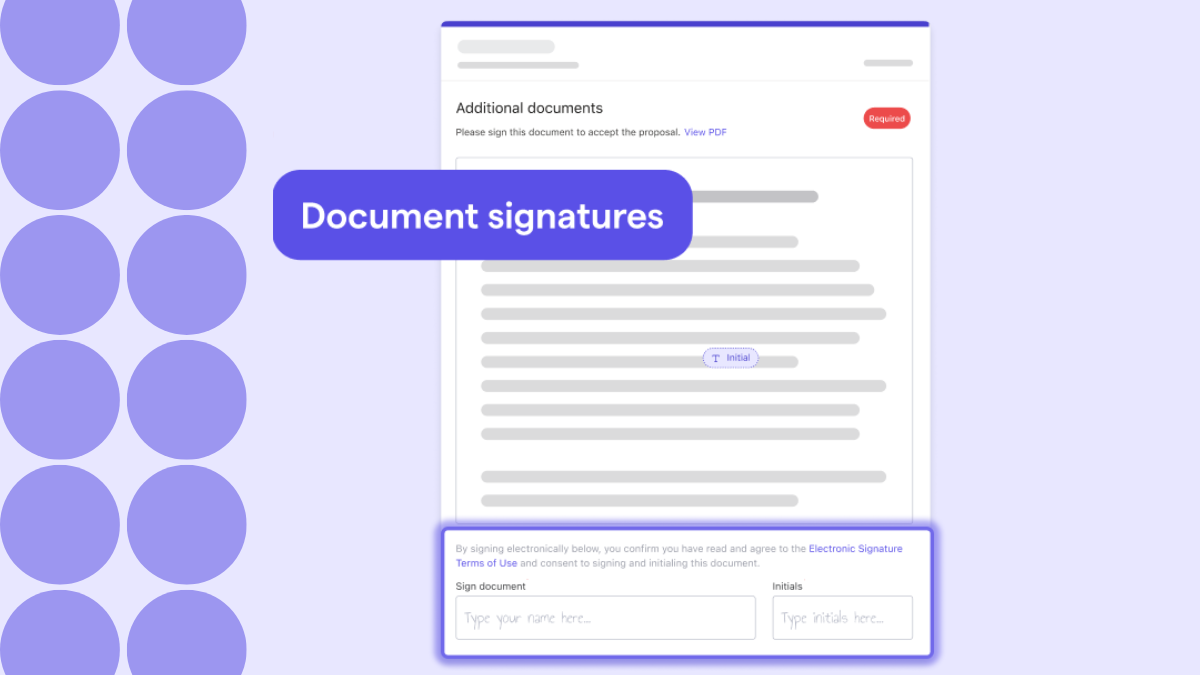What Is Out Of Scope Work? And How Can You Avoid It?

Key takeaways
- Out of scope work can cost your business thousands of dollars every year.
- Recognize out of scope work by referring to your initial project agreement, tracking project progress over time, and watching out for common phrases clients use.
- Managing scope creep by making sure your contracts are detailed.
- Document scope change conversations to ensure you and the client are on the same page.
Do you hear these phrases regularly?
- "Quick question!"
- "Can we add this to the next report?"
- "Let's push the timeline to next month."
Those questions are a strong indicator that the request is out of scope. Scope creep is a significant pain point for professional service providers that can be hard to recognize. Asking for more money can feel awkward, and you might think completing that 'quick ask' is easier than going back to your contract and redoing it. Besides, giving a loyal customer a little leeway might not seem like a big deal.
But scope creep might be costing you more than you realize. Unrecovered out-of-scope work costs US accounting and bookkeeping firms an average of $76k each year (over $103k in AU and nearly £70k in the UK). Those 'small' requests aren't so small after all! Even smaller firms can feel the pinch, with 43% of accountants and bookkeepers who experience increased scope saying they end up absorbing the increased time and costs themselves.
The first step to recovering funds for out-of-scope work is recognizing it — which can be challenging.
How to Identify Out-of-Scope Work
Understanding what is considered out-of-scope work is the first step to identifying it. There are several types of scope creep, and their exact presentations can vary by industry. For example, in accounting services, out-of-scope work might include asking for tax advice that wasn't included in the initial agreement. In financial consulting, expanding project limits might look like a business client asking for personal finance advice.
In general, out-of-scope work falls into four main categories:
- Gold plating: Adding on new features, tasks, or enhancements is one of the most common types of scope creep in professional services like accounting, financial services, and marketing.
- Asking for advice: While not all advice falls into the out-of-scope work bucket, it's a common type of scope creep that often goes unnoticed by service providers. Offering advice and strategic planning is a service that should be included in project agreements.
- Unplanned changes: Shifting priorities, changes in the original plan, or asking for changes based on input from different stakeholders can indicate out-of-scope work.
- Extended timelines: Extending a project's time can strain resources and delay payments, which often leads to scope creep.
So, how do you spot the signs of out-of-scope work?
Refer to your Initial Project Agreements
Your initial project agreement or engagement letter is the gold standard for identifying out-of-scope work. This should be as detailed as possible to set client expectations and prevent misunderstandings. Depending on the services you offer, this might include how many people are on the payroll, how often reconciliation will occur, how often financial statements are provided, the number of meetings, and who your team collaborates with.
If the client makes a request that is not in the initial agreement, then the work is out of scope. This can include (but isn't limited to) asking for advice for tax preparation, strategy sessions, investment advice, or personal finance planning.
Track Project Progress Over Time
Tracking progress over time requires you to monitor projects more closely. This will help you spot when deliverables expand outside of the original agreement. By comparing the actual progress of tasks against the initial project plan, you'll quickly spot tasks or deliverables that don't fall in scope. If tasks are taking longer than expected or if additional tasks are being added without proper documentation, that is a strong sign of scope creep.
Keep An Eye Out For These Phrases
One of the easiest ways to recognize out-of-scope work is to pay attention to the language clients use. Training yourself to keep an eye out for these phrases will help you recognize scope creep early so you can manage client expectations:
- "Just a quick question": This often precedes a request for advice or tasks outside of scope.
- "While you're at it…": This phrase downplays the additional task in an effort to make it seem like no big deal.
- "It would be great if…": Adding new ideas or making suggestions to the current project is a key indicator of scope creep.
- "I know it wasn't part of the plan, but….": When clients recognize that a request is outside of the original scope, that's a clear indicator of scope creep!
"We can discuss the details later…": When a client postpones a discussion, it can be an indication of changing tasks or requirements. Make sure to formally document any requests instead of pushing them off.
Related article: See how scope creep impacted an accounting firm – and how they fixed it.
Scope Creep Management: What to Do When Work Falls Out of Scope

Identifying scope creep early allows you to address it proactively and protect your time. Once you've identified an out-of-scope request, you'll need to address it. These steps will walk you through the process:
1. Create Detailed Initial Project Agreements
Preparation is the key to limiting losses from out-of-scope requests. Start by defining the project scope with a detailed initial project agreement. This ensures that both you and the client are crystal clear on expectations and makes managing project boundaries easier.
Depending on the services you offer, your agreement might include:
- Specific deliverables
- Project timelines
- The number of meetings
- Who you will collaborate with
- Types of services
- Specific tasks.
It can also be helpful to mention what tasks aren't included in your contract if a topic is frequently discussed with clients. For example, a social media manager might mention that they don't respond to direct messages for the brand, while an accountant might want to be clear that tax consultations are not included in the agreement.
2. Ask Clarifying Questions
Requesting more information about an ask can inform your next steps and signal to the client that the request is out of scope. For example, if a client wants to add a new report to your current project, ask, "Is this a one-time request, or would you like to add this report to the project going forward?" This information will also help you determine whether to send an ad-hoc payment request or add it to your monthly billing cycle.
3. Make a Script
Addressing out-of-scope work can be uncomfortable. Maybe you don't want to upset a loyal client, or discussing additional pay feels like nickel-and-diming. Having a short script in your pocket can make addressing those requests easier because you already know what to say.
Here are a few examples of simple scripts; feel free to adjust them to fit your offerings and clients:
- "Sure, we'd love to take on that additional [task, report, etc.]. Generally, this service is [amount]. If that works, I can send over the adjusted contract later today."
- "We can absolutely help you with that. For short turnaround times like this, the fee is [X]. Does that work with your quarterly budget?"
- "We do provide that service and would love to help. The rate is [X]. Does this need to be discussed with [additional stakeholders], or should I send the adjusted scope of work agreement now?"
The key is to sound confident, acknowledge the request, and quickly inform the client of the additional costs. Don't assume the client is asking for free work; simply acknowledge the request and inform them of the costs.
4. Negotiate Terms
Ideally, every conversation about out-of-scope work would be as simple as the ones above. In reality, you may need to negotiate with the client a bit before settling on terms. Here are a few tips for negotiating to ensure everyone is satisfied:
- Offer tiers: Offering tiered options for a service allows the client to choose exactly what they need. For example, you might offer a tax strategy session, where you offer advice, and a second tier, where you file for them. Tiered pricing can also help you bring in new clients.
- Be clear on timelines: Additional requests take more time. Adjust both the budget and the timeline accordingly.
- Ask for additional resources: Depending on the request, you may need access to new tools, meet with different stakeholders, or an additional budget for things like ad spend. Include these requests in the negotiation.
5. Document, Document, Document
Maintain thorough documentation of all scope discussions and changes to ensure clarity and accountability. If you have discussions in person or via video chat, send a follow-up email with takeaways to ensure everyone is on the same page.
Once the terms are agreed upon, make changes to your initial project agreement and have the client resign.
Out of Scope Work is an Opportunity

Undercharging (or not charging at all!) for out-of-scope work can kill your profitability. Recognizing the signs of out-of-scope work is the first step to managing it. Next, make sure you use the right tools to manage out-of-scope requests.
Ignition is an all-in-one platform that automates and optimizes proposals, client agreements, billing, and out-of-scope management. It allows you to make quick adjustments to project agreements, send ad-hoc payment requests in seconds, and spend less time on billing.
Ignition customers save an average of 18 hours per week.



